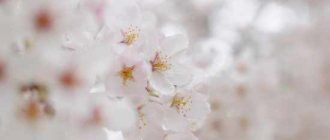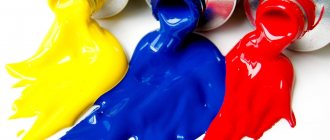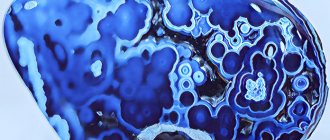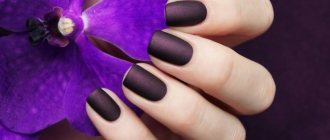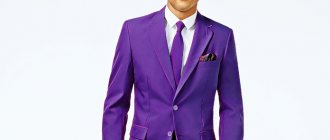You can either love pink or hate it, there is no third option. Some people consider it the color of love, others - vulgarity, frivolity and immaturity. Both are right. The psychology of flowers is a very interesting area that can tell a lot about a person. What does the color pink mean in psychology and its symbolism will be discussed further.
According to the meaning of the color pink in psychology, it helps in times of disappointment and stress. This shade is a wonderful antidepressant that removes blues, melancholy and instills faith in a better future. Look at it more often if you want to get rid of the burden of past relationships, long-standing grievances, ballast that pulls you down. It sets you up for creating a positive future.
Origins
The name of the color comes from the name of the rose hip flower: it is a plant from the Rosaceae family. Its buds have a delicate shade. The English word “pink” also means a common shade of pink. This word appeared thanks to the verb “to pink”, meaning to give the fabric a figured edge, like a carnation petal.
It is worth noting that color perception in psychology is a rather controversial topic. It's all about differences in perception.
Interestingly, the Yele Dnie (Papua New Guinea) and Piraha (Amazon) languages do not have such a word at all - color
This does not mean that people who speak these languages are color blind. Physiologically, their organs of vision are no different from any others. Papuans describe colors in metaphorical categories or through surrounding objects.
In some cultures (for example, Hadza, Tanzania) there are only symbols of black, white and red; Tanzanians simply do not need the rest. But with the complication of the sociocultural system, new designations for colors and their shades appear. Therefore, the name pink, as not the most basic color in the world’s palette, appeared quite late - the first mentions can be traced in the Odyssey, created in the 8th century BC.
In general, pink is quite widely represented in nature:
Without exception, all sunsets and sunrises are accompanied by a spill of red and orange hues across the sky. This happens because the sun's rays need to travel a much greater distance to the ground than when the sun is at its zenith. Because of this, short-wavelength colors of light, such as blue and green, are scattered on their way to our eyes. We can only observe colors with a long wavelength of light, and these are red shades. The meat turns pink when cooked. The fact is that the protein myoglobin, contained in animal tissues, is red. But during cooking it begins to oxidize, the meat turns pink, brown, and in some cases even turns white. The meat of some delicious aquatic inhabitants, such as shrimp, crabs, and salmon, is pink in color due to the presence of the pigment astaxanthin.
Roses, sakura flowers, and raspberries contain the natural dye anthocyanin. Of course, plants developed this property for a reason: by doing this, they attract pollinators, and in the case of berries, they ensure the colonization of new territories. For example, a bear that eats a berry will leave its seeds in a completely different place. Some stones, precious and not so precious. For example, quartz, sapphire, topaz, jade, opal. There are entire pink beaches in the Bahamas, Greece, Italy and Indonesia. Some of them acquired this color due to crumbled shells of marine life.
Pink for boys and blue for girls
This concept was in effect until the middle of the 19th century. As a rule, in the old days it was light and pastel colors that symbolized children, in particular boys. It was only a few decades later that blue and pink began to be separated by, so to speak, gender. Many years ago, the color blue was considered a symbol of femininity, and pink was most often worn by boys.
“We are still friends”: Derevianko commented on the breakup with his wife
If there is little snow, there will be no harvest: December 16 is Ivan the Silent Day
A student at the Vietnam Police Academy shared how she takes care of her facial skin.
For example, you can find some publications from 1918 where you can see that boys predominantly dressed in pink and girls in blue.
Story
Mentions of the color pink have been known in human culture since ancient times. Thus, Homer and Lucretius used it to describe sunrises in their imperishable works.
But this color entered the textile sphere and fashion much later. It can be seen in the paintings of medieval and Renaissance artists, but it was certainly a distinctive symbol of the nobility and aristocracy.
Compared to other colors such as green and blue, pink is much more moderately represented in nature. Therefore, it has become a symbol of everything rare, exotic and expensive.
The first heyday of the popularity of pink is considered to be the mid-18th century, when the dramatic Baroque was replaced by the romantic, sentimental and dissolute Rococo. The color owes much of its popularity in this era to the favorite of Louis XV, the Marquise de Pompadour.
The color pink acquired the status of an exclusively girlish attribute only in modern times.
Later, the opportunity to purchase outfits of such shades spread to other classes of society. Since the 19th century, color has become a symbol of youth and purity. It was considered good form to choose a pink dress for a girl’s first visit to the ball. Children's clothing for boys was also made from fabrics of this color, and here's why.
The color red, both now and then, was a symbol of determination, strength and courage. British soldiers wore red uniforms, demonstrating their desire for victory. Pink was considered a diluted version of red, its “children's version.” Therefore, a child should grow up to be a real man if he sleeps in pale red diapers.
The end of the 19th century in the United States was marked by a real war of stereotypes: which of the boys and girls should be pink and blue? Fashion magazines in different cities had radically different opinions, with Cleveland alone stating that pink was great for both boys and girls. The most reasonable in this regard seems to be the opinion that this confrontation was caused only by the growing psychology of consumption, when tailoring became widespread. Stores simply needed more sales.
In 2007, representatives of evolutionary psychology conducted a study, the hypothesis of which was the statement of gender predisposition to color: women - red shades, men - blue. The theory was based on the traditional activities of ancient people. Women were engaged in gathering, so their eyes were accustomed to searching for red spots on a green background. When hiking and hunting, men navigated by the sky, which took on all shades of blue. Unfortunately, the conclusions of such an interesting study did not stand up to criticism.
The opinion that pink was a color for girls finally took hold only after the Second World War.
Shortly before this, the color lost its association with innocence, as bright, flashy shades of fuchsia came into fashion, which gave the color a sexy and provocative role.
The harbinger of this was the sexual revolution, which was still sprouting in the West.
According to many fashion researchers, such as Jennifer Wright, after World War II, this color came into use thanks to the wife of the 34th President of the United States, Mamie Eisenhower. She often appeared in public in pastel pink suits and even changed the interior of the White House to her favorite color scheme. Mamie Eisenhower was far from the ideas of feminism and had the image of a real housewife, so necessary to maintain the spirit of the nation in the post-war years. Perhaps this is why pastel colors have become a feminine attribute.
At the same time as these events, pink was gaining popularity in pop culture. The star of the time, Marilyn Monroe, danced in a flashy fuchsia dress in the film “Gentlemen Prefer Blondes.” A little later, Kay Thompson in “Funny Face,” a film with Audrey Hepburn, sings how beautiful pink is against the backdrop of black and beige shades. It is then that bright pink acquires the status of infantile and “narrow-minded.”
In the second half of the 19th century, pink appeared in the fashion collections of Mary Quant, who introduced miniskirts into fashion, and Yves Saint Laurent. The entire progressive world was delighted with the “pink” works of Andy Warhol and David Hockney. Since then, color has experienced a real “boom” in fashion, design and culture.
Gradually losing its status as a marginal color, pink at the beginning of the new millennium is already worn by everyone, including men. This is especially evident in the example of representatives of pop culture. Rapper Cam'Ron actively promotes pink, once even walking the carpet in a pink fur coat.
Today pink is the color of progressive youth
The most fashionable color is the so-called millennial pink, which also contains shades of orange. This is the color of the independent and active, which is forever forgotten as frivolous and vulgar.
Physiological and psychological effects
Pink color has a calming effect on the body, even in the most irritated state. The pink room will help overcome children's fear of the dark and give the child a restful sleep. It belongs to warm shades and transfers all their properties.
It helps the body to gently accelerate blood circulation and normalize the functioning of internal organs. Color is used in various meditative practices; it triggers recovery processes in the body.
White, present in its composition, promotes the development of mental activity, relaxes muscles, evens out breathing, helps restore the endocrine system, and protects against eye and ear diseases.
Pink is the color of tenderness and airiness, and with its help, romantic relationships with a partner are improved. Red color awakens passion and sensuality, pink has a different effect, it awakens the partner’s desire to be affectionate, to show warmth, caution and caring. It builds trust in couples and removes psychological barriers. For girls who have not found love, it is recommended to wear pink stones; they will make the image more playful and seductive.
Symbolism of pink
The symbolism of the color pink has changed depending on the era. When color first began to be used to create dresses and interior decoration, it was a symbol of rarity, wealth and good taste.
Later, soft pink became associated with youth, innocence and purity. This is the color of spiritual joy, elevated mood and peace. It is also the color of falling in love, characteristic of young people. It is an emblem of daydreaming, romance and immaturity.
There are a lot of set expressions involving the word “pink”, which have a derogatory meaning and are associated with naivety and an uncritical view of things
Bright shades of pink have always been associated with protest and the fight for independence. At one time, being a symbol of the women's movement for equality, it gradually became a hallmark of sexual freedom movements: for example, an inverted pink triangle is present in LGBT symbols.
A study conducted in the USA gave the following results. Pink, according to most respondents, symbolizes charm, politeness, sensitivity, sweetness, childhood, femininity and romance. In combination with white it demonstrates chastity and innocence, with black it demonstrates sexuality, eroticism and seduction.
It is not used in heraldry, again due to its symbolism: it is too “immature” to represent countries, dynasties and social groups. However, it is often classified as a leftist movement in politics, for example, it is the unofficial color of the Portuguese Socialist Party.
Very often associated with the sexual sphere.
In Japan, “pink films” are films with erotic content.
Main characteristics
Pink color is considered one of the shades of red. It is obtained by mixing red and white. On the one hand it is passion and belligerence, and on the other hand it is tenderness and gullibility. There is an opinion in society that it is only suitable for young people. But the right color combinations allow those who are older to wear it too.
In the generally accepted meaning, pink is pleasant emotions, new life, spring, rebirth. It symbolizes femininity, youth, innocence, romance and, of course, love. It is this color that comes to mind when mentioning the goddess of beauty, Venus.
What else does pink mean?
- Lack of aggression, friendliness, goodwill. It is often used to paint the walls of correctional institutions and sports locker rooms.
- Carefree childhood, youth. Sometimes the shade speaks of unconditional happiness.
- Dream world, belief in miracles. People who love this color in clothes have extraordinary imagination. They live in their illusions, which are often far from what is happening in reality.
In addition to positive properties, the shade also has a number of negative ones. His lovers exhibit frivolity, infantilism, and excessive self-love. Such people always and everywhere try to attract the attention of others. At the same time, they flaunt their uniqueness.
Significance in psychology
The first person to think about the perception of colors by the human psyche was Johann Wolfgang von Goethe, a German philosopher and writer. His work “Towards a Theory of Color” was not supported by research, but represented intuitive guesses. At that time (1810) it was not possible to prove differences in the perception of color, and a number of physicists rejected the work. However, the essay had an impact on painting: Philip Otto Runge, William Turner, the Pre-Raphaelites, Kandinsky wrote works influenced by Goethe's theory.
The topic was developed more than 100 years later in the works of Kurt Goldstein.
Goldstein's theory boils down to the fact that colors with a short wavelength (so-called “cool colors”) and with a long wavelength (“warm”) have different effects on the psyche. However, this has not yet been proven
In practice, the influence of pink on the psyche comes down to the fact that this color is sedative, that is, it calms and relaxes. It dulls emotional activity and temporarily softens an angry character.
This knowledge is used to achieve certain goals. Thus, walls in correctional institutions are painted in a similar way to reduce the aggressiveness of difficult teenagers and to prevent suicide.
For men
Men under the influence of pink color therapy become less aggressive and more calm. This is a great way to relieve stress and get in the mood for relaxation. This color evokes peace and helps you fall asleep quickly.
In 1979, a study by Alexander Schauss was published, which stated that when a person observes pink, the rate of heartbeat, breathing and pulse decreases. Based on Luscher's research, he created the following hypothesis: when exposed to pink color therapy, involuntary muscle relaxation is observed. The experiment was carried out in a Seattle prison. For 156 days, newly arrived prisoners lived in pink walls. During this period, not a single case of aggressive behavior of men was recorded. The color was named in honor of two prison officers who contributed to science.
Mainstream era
At the turn of the century, pink became a mainstream color – and at the same time, society’s perception of it changed dramatically. Industrialization allowed for the mass production of cheap paints like magenta, which led to a surge in aggressive and garish shades of pink. From the color of the cream of society, it turned into the color of the working class, and then - because it was very fond of prostitutes - from the sublime, pink became vulgar.
During the first two decades of the 20th century, French fashion designer Paul Poiret introduced pale pink, pastel, cherry and fuchsia into the high fashion spheres. By the early 1950s, pink was associated exclusively with women, largely due to the fact that in the post-war United States the famous stereotype of “pink for girls, blue for boys” became a reality.
The doctor named a habit that will help avoid back pain
He was annoyed that everyone liked Lena: how Anton Khabarov and his wife live
Pixie with long bangs and 9 more fashionable short haircuts for straight hair
Negative effects of color
The negative impact of pink was found only in bright, flashy shades. Fuchsia can depress a person’s physiological state and negatively affect the psyche: causing irritability and nervousness, headaches.
Active colors can evoke strong emotions, and with prolonged exposure even provoke negative physiological manifestations: sleep disturbances, loss of appetite, headaches and toothaches, sexual and digestive system disorders.
The fact is that bright colors greatly accentuate attention. This leads to increased tone of the nervous system, ready at any moment to react to the object of attention. Because of this, the psyche is always in a state of tension, a person cannot relax. Your head begins to hurt, it becomes difficult to fall asleep, and other delights of overloading the nervous system appear.
How are character traits and color palette related?
When a person gives preference to a specific shade when choosing clothes or interior items, this serves as an indicator of certain qualities of his character. Everyone has 2-3 favorite colors - light or dark, bright or muted. They are preferred to other shades when choosing wardrobe and interior items. According to experts, colors and human character are interconnected in psychology. The craving for a particular color occurs not because of its aesthetic appeal, but due to specific reactions of the brain centers.
Shades of pink
Pink joins a large group of shades, from pale pastels to loud purples. Different shades have different effects on the psyche and evoke different associations.
Pink is one of those colors whose character is ambiguous and can evoke both strong emotions of passion and tenderness and sentimentalism.
Several popular shades:
Millennial pink The most fashionable color of the generation. Its popularity began with the 2014 film The Grand Budapest Hotel. This color can be roughly described as a grapefruit shade of apricot salmon.
Flamingo The extravagant color of the bird is a child of the sunset. It is obtained by adding orange to pink.
Barbie Screaming is the iconic color of the generation of children of the 70s and 80s, a real pop culture idol.
Magenta A purple shade of hot pink, closer to violet.
Fuchsia Another popular purple shade, slightly darker than magenta, named after the flower.
Pearl pink A delicate shade symbolizing prosperity and mystery.
Cotton Candy A barely perceptible shade, it is one of the palest in the pink palette.
Raspberry Rich, “delicious” color. This is a bright, but not flashy shade, so it’s suitable even for children.
Ashes of a Rose Languid and matte, very close to nude.
Beetroot One of the most saturated in the range, similar to purple and violet, but still classified as pink.
Salmon Not flashy, but a deep color that differs from the classic one in its orangeness.
Cherry Bud A little more blue in this shade, and now it is no longer pink, but the color of a cherry bud.
Hollywood light cherry Often found in fashion shows and expensive cosmetics lines.
Carmine pink Very close to red, there is almost no blue in it, but still a little softer than red.
Flesh The closest thing to skin color, but skin cannot exist that color.
And these are not all shades of pink.
Video
Drill-driver DEKO GCD12DU3 Li-ion, 1x1.5Ah, Replaceable battery, 12 V, 32 Nm, 1 battery
1697 ₽ More details
Drill/driver DEKO DKCD16FU Li-ion in case + 63 accessories, 2x1.5Ah, Replaceable battery, 16 V, 32 Nm, 2 batteries
3168 ₽ More details
Foundations for problem skin
Combination with other colors
Due to the variety of shades, pink can be combined with a huge number of colors. It is important to understand what result the author wants to achieve.
In any case, combinations with white and black would be ideal.
You need to be a little more careful when combining with green, red, blue, brown and yellow. In some cases, these combinations will be magical, but sometimes they can ruin a harmonious image.
It is almost impossible to spoil a picture by adding beige, gray and blue. There are no colors that absolutely cannot be added to pink. This is a matter of taste and style. For example, seemingly incompatible pink and red are on trend today, but not all of their shades will look harmonious.
Who is it suitable for?
Suitable for young girls of short stature. It emphasizes youth, innocence, purity and sincerity. For blondes, delicate shades are suitable; for brunettes and brown-haired women, it is better to choose darker ones. If we talk about zodiac signs, then pink and its shades are more suitable for fire and air signs, but earth signs (Taurus, Virgo and Capricorn) do not like it. These three signs are down-to-earth, practical and conservative; shades of green, orange, brown, and also classic black are more suitable for them.
Pink lovers
People who prefer the color pink have a fine mental organization. Most often, these are vulnerable, sentimental natures who often have their head in the clouds and dream. They perfectly understand the mood of the people around them, are capable of virtue and tend to perceive reality too emotionally.
They are responsive, easy-going and cheerful. Most are able to endure adversity with a smile on their face and pull others along with them. These are extroverted individuals who are no strangers to suffering. They are not prone to anxiety and calm down quickly. Sometimes they can be irresponsible and take on more than they can handle.
Pink lovers do not tolerate cruelty and are passive. They are characterized by frequent mood swings and restlessness.
But this is not always the case. An example of this is the pink revolution of the early 20th century, then the “shocking pink” of the 60s, and now the widespread use of color as a symbol of an active, extravagant life.
It is unlikely that people who have made pink the sign of their ideological movements can be called modest or immature.
This color is chosen by brave individuals who are ready to march in the forefront, break norms and fight for their rights.
What kind of people like pink?
Typically, pink lovers are kind and peace-loving people who oppose any form of violence. If a girl surrounds herself with pink, most likely she wants to feel her femininity and loves male attention. In addition, if a woman suddenly starts wearing pink things, this may mean that right now she feels the need for male support and protection.
While studying the meaning of the color pink for humans, psychologists found that people who like it are usually dreamy people. They believe, or at least want to believe, that miracles happen. They are characterized by a certain immaturity, and it is very important for them to have a corner in which they feel comfortable and protected. also liked by talented and creative people , representatives of creative professions and simply extraordinary individuals.
In relationships with others, pink lovers are very friendly and sociable. Almost always they are extroverts, easily communicate with strangers and quickly become close to new friends. Usually they are so positive that others are involuntarily drawn to them. Interestingly, a passion for the color pink is often accompanied by high self-esteem, increased emotionality and the ability to find compromises.
Use in clothing
Pink is popular in the fashion industry. He is equally loved by both women and men. It is no longer considered an exclusively female color, and even more so, the stereotype that says pink wearers are people with bad taste has long been forgotten. The only thing worth keeping in mind when choosing such outfits is age.
The pink color of clothing visually rejuvenates and gives freshness
Any shades of pink are suitable for young people and will not cause condemnation. But older people should use it with caution, and they should definitely avoid flashy shades, as it may look vulgar.
Particular attention should be paid to shades when preparing for various kinds of events. Since this color is not associated with seriousness, it is better to wear suits in neutral shades, such as ash rose or dusty pink, for business meetings. But for parties and cultural recreation, anyone can do it.
The choice of this color is the choice of creative and bright natures.
Symbolism
- Identified with the arrival of spring, with new life, with beginnings.
- It is compared to the wings of a butterfly.
- If we consider the ancient Romans, they associated it with Venus, who was the Goddess of beauty and love.
- It is a symbol of childish simplicity and sentimentality.
- The phrase “pink dreams” describes desires that will never be fulfilled because they are so different from reality.
Pink color in the interior
Pink is simply a unique color for interior use. It is equally good for the bedroom, kitchen, living room and bathroom. Classic combinations - with white or black. Well, if you manage to harmoniously add emerald or brown to it, it will be just an excellent color scheme.
Mistakes when using pink in the interior:
Pink roses on a pink wall. It's important not to overdo it. Pink in moderation causes peace, but if there is too much of it, the sweetness of such a room can simply give you a headache. In addition, it tends to visually bring objects closer, which can make the room seem smaller. Fuchsia or magenta for the bedroom. Such flashy colors will not only look threatening, they will deprive you of sleep and cause anxiety. If you are in doubt about the amount of pink, you should choose it as a complementary color. Using it as a main dish requires subtle taste.
The following combinations with pink will look most noble in the interior:
gray beige emerald or other suitable green brown blue
Use in advertising and business
One of the most in-demand professions of our time is a marketer. Thanks to them, a person chooses one product and avoids another.
According to psychological studies, about 60% of advertising success depends on the color scheme
Pink is actively used by marketers as a powerful tool. Very often advertising of women's products, and the products themselves, have this color. It is popular for underwear and cosmetics packaging.
Its use in children's products is no less popular. Dolls, houses, strollers, soft toys, even chewing gum are made pink. It is associated with a sweet taste, which is why sweets are also often pink in color or packaged accordingly.
Now a negative marketing and then political phenomenon has received publicity - pinkwashing.
Originally, the term meant a PR strategy by unscrupulous companies that exploited a disease—breast cancer—to promote their products and distract attention from the shortcomings of their brand. In fact, marketers were simply looking for profit, profiting from the grief of sick people. The pink ribbon is a symbol of the fight against breast cancer and gives part of the name to this strategy.
Subsequently, the term came to be applied to political and social events that involved diverting attention from real problems and covering up ignoble acts with gestures of goodwill.
When everything changed
Dramatic changes occurred after the end of World War II. Suddenly, pink became a very fashionable color and was presented by trading houses as a truly feminine color.
Blue suddenly began to be compared exclusively with men. The separation between these two shades grew more and more. This is how blue cribs for boys, toys, clothes and much more began to appear. But today this trend is gradually fading into the background again.
Found a violation? Report content
Health effects
There is very little theoretical research in the field of psychology of perception and the effects of color on the body. Most of the works are of a practical nature. That is, the phenomenon of impact on the body simply exists, that’s all. But scientists are not yet able to explain how exactly this works.
Color therapy is still a pseudoscientific treatment method, that is, it has no scientific basis
How pink affects the body:
Acts as a sedative and analgesic.
Calms, beneficial for the nervous system. Reduces tension and fatigue. Helps with sleep problems. Promotes bone tissue restoration. Helps with digestion. Reduces aggressiveness. Improves mood. Improves appetite. It is important to understand that in large quantities pink can have the opposite effect on the body.
* * *
Perhaps the most controversial and controversial color in our culture is pink. His story is full of surprises, and the impact on the psyche is ambiguous.
Pink is a symbol of innocence and childhood, it easily turns into a sign of flirtation and sexuality, you just need to add brightness to it. That is why it should be used with caution in the wardrobe and interior.
This color carries a lot of emotionality. Therefore, no matter what a pink lover is - a modest dreamer or an activist and freedom fighter, he is always a passionate person with a warm heart.


